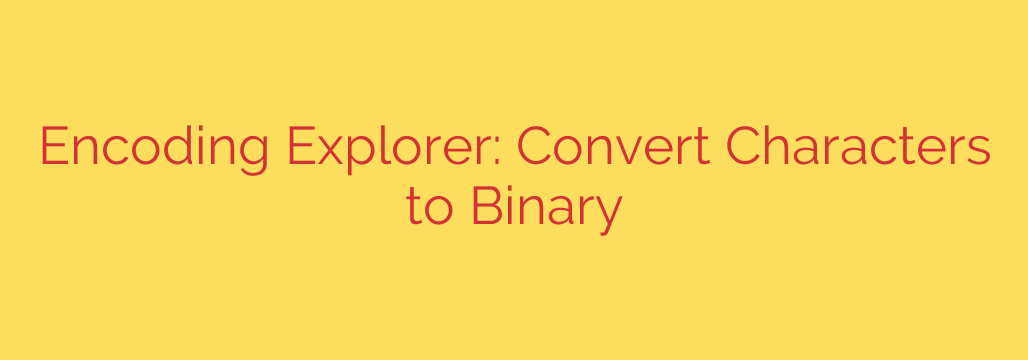
Have you ever wondered how computers manage to display and process the words, numbers, and symbols we type every day? At its core, the digital world operates on just two values: 0 and 1. This is known as binary code. Everything a computer understands, from complex programs to simple text messages, must first be translated into this binary language.
The crucial step in bridging the gap between human-readable characters and computer-understandable binary is character encoding. Think of encoding as a universal dictionary that assigns a unique sequence of 0s and 1s to each character. Without a standard encoding system, a computer wouldn’t know whether the binary sequence 01000001 represents the letter ‘A’, the number ‘1’, or something else entirely.
Historically, one of the earliest and most common encoding standards was ASCII (American Standard Code for Information Interchange). ASCII used 7 or 8 bits to represent characters, covering basic English letters (both uppercase and lowercase), numbers, punctuation marks, and control characters. While revolutionary at the time, ASCII was limited primarily to English and didn’t support characters from other languages or a wide range of symbols.
As computing became global, the need arose to represent a vast array of characters from countless languages and scripts worldwide. This led to the development of Unicode. Unicode is not just a single encoding; it’s a standard that assigns a unique number (called a code point) to every character, no matter the platform, program, or language. Different encoding forms are used to represent these Unicode code points in binary.
The most prevalent Unicode encoding form today is UTF-8 (Unicode Transformation Format – 8-bit). UTF-8 is particularly popular because it is variable-length. This means it uses between 1 and 4 bytes (8 to 32 bits) to represent characters. For characters in the original ASCII range, UTF-8 uses just one byte, making it backward-compatible with ASCII. For characters in other languages or more complex symbols, it uses more bytes. This efficiency makes UTF-8 an excellent choice for web pages and text files as it saves space for common characters while still allowing for global character support.
So, when you type a character like ‘B’, the computer doesn’t see the shape of the letter. Instead, it looks up the binary representation assigned to ‘B’ by the active encoding standard (for example, 01000010 in ASCII and UTF-8) and processes that binary sequence. This seamless conversion of characters to binary happens constantly behind the scenes, enabling everything from writing documents to browsing the internet. Understanding this fundamental process reveals how digital information is truly stored and manipulated at the most basic level.
Source: https://www.linuxlinks.com/encoding-explorer-transforms-characters-binary/








